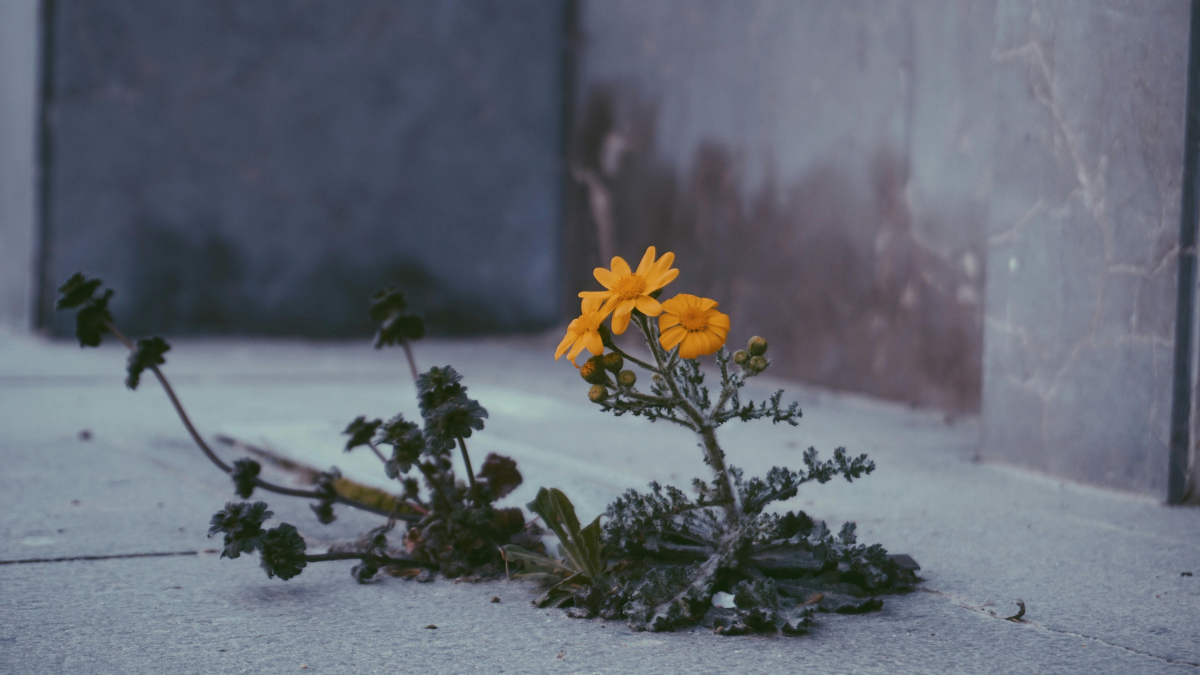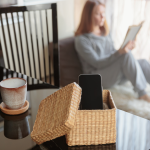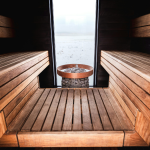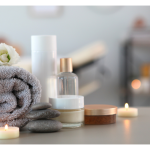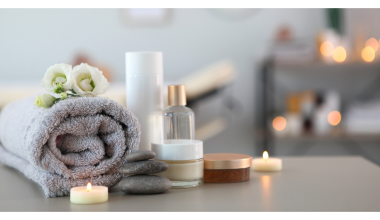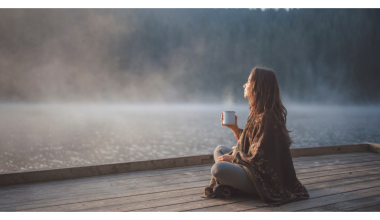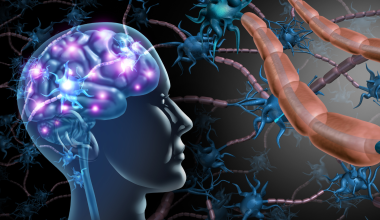Summary
We’re living through a modern “Second Age of Anxiety”—a pervasive sense of unease reminiscent of the post-WWII era—but this period can be an opportunity, not just a burden. By tuning into the body, boundaries, and emotional cues, and using tools like rest, cold therapy, and vagus-nerve support, anxiety can become a guide toward growth, healing, and deeper self-awareness—and a new way to live more intentionally and resiliently.
The Age of Anxiety isn’t just a phrase that fits the 21st century—it actually comes from a 1947 poem by W.H. Auden, written in the shadow of World War II. Back then, it captured a deep sense of unease that had settled over much of the world. The war had ended, but the fear hadn’t.
Between 1946 and the mid-1960s, people lived with the emotional aftershocks of global conflict and the looming threat of nuclear disaster. Anxiety became a defining feature of everyday life.
Interestingly, anxiety wasn’t considered a medical diagnosis at the time. Instead, it was seen as a natural response to the relentless pace and pressures of modern life.
Psychologists pointed to work stress, family struggles, and social expectations as the culprits. Anxiety became so common that it was practically woven into the fabric of Western society, shaping how people thought about mental health and how psychiatry evolved in the decades that followed.
The Second Age of Anxiety
Fast forward to today, and it’s hard not to feel like we’re living through a second Age of Anxiety. The causes may have shifted, but the undercurrent of chronic unease is strikingly familiar. Instead of fallout shelters and Cold War tensions, we face a constant digital barrage—news alerts, economic volatility, climate dread, political polarization, and the quiet burnout of always being “on.”
In fact, anxiety disorders have become the most common of all mental health disorders globally. In Canada, 29% of the adult population reported a diagnosis of depression or anxiety in 2023, up from 20% in 2016.
We live in a world that keeps us on edge:
- Endless notifications keep our brains in a state of low-level fight-or-flight.
- Ultra-processed foods mess with our gut microbiome—the very ecosystem that helps regulate mood and stress.
- Sleep deprivation is practically baked into our schedules.
- Hormonal shifts—especially in menopausal women are undertreated, despite their massive impact on mood.
- Environmental factors – The uncertainty that comes with financial instability, the climate crisis, and political unrest contribute to the rising tide of anxiety disorders. leaving a pervasive sense of fear and helplessness.
- Social Isolation – And despite being more digitally connected than ever, many people report feeling lonelier and more isolated than in decades past.
But unlike the first Age of Anxiety, where nervous tension was seen as a cultural response to modernity, today’s anxiety is more likely to be labeled a disorder, diagnosed, and treated—often with medication.
And while that clinical approach has helped millions, it can also obscure the bigger picture: that many of us are simply reacting, quite understandably, to an increasingly overwhelming world.
The Face of Anxiety
The face of anxiety today doesn’t always look the way you might expect. It’s not all panic attacks or visible distress. More often, it wears a smile. It shows up early, meets deadlines, keeps the group chat going, and remembers your birthday.
It’s your boss, teenager, babysitter, doctor or next-door neighbour. Many people with anxiety are high-functioning—they appear calm, competent, and in control on the outside, while battling a constant hum of worry, overthinking, and self-doubt.
The Impact of Sustained Anxiety
But lurking beneath the surface, the constant thrum of anxiety can quietly take its toll on both the body and the mind. Over time, the nonstop mental chatter and emotional strain can lead to real burnout. Here’s how it often shows up:
Physical effects:
- Exhaustion and burnout from constantly being “on”
- Heart palpitations or a racing heart, even at rest
- Digestive problems like bloating, nausea, or IBS
- Chronic headaches or migraines
- Muscle tension and body pain
- Chronically fatigued – trouble sleeping or waking up tired
Emotional and social effects:
- Irritability or mood swings, often without a clear cause
- Withdrawal from social connection or feeling “numb”
- Over-apologizing or people-pleasing to avoid conflict
- Self-doubt and overthinking, even after things go well
- Difficulty being present or enjoying downtime
With so many of us dealing with these debilitating symptoms, what approaches and strategies can we take to live better alongside our ever-present anxiety?
Anxiety: An Opportunity for Growth?
“The current level of pain, anxiety, and depression in our society offers a huge opportunity for growth on a larger scale, and it is encouraging to see that more and more people recognize that the path to harmony, peace, and fulfillment leads them within.” — Friedemann Schaub
As uncomfortable as anxiety can be, it also holds the potential to become a powerful teacher. When we stop viewing it solely as something to fix or medicate away, and instead approach it with curiousity, anxiety can reveal where our boundaries are too thin, where our values are being compromised, or where we’re living out of sync with ourselves.
It can prompt us to slow down, reflect, and make changes that bring more alignment and peace into our lives. Whether it nudges someone toward setting firmer boundaries, healing old wounds, changing toxic work environments, or simply learning how to rest, anxiety can act as a signal—not of weakness, but of sensitivity, attunement, and unmet needs. In this way, it’s not just a condition to manage, but an invitation to heal and grow.
“The constructive way of dealing with anxiety…consists of learning to live with it, accepting it as a “teacher,” to borrow Kierkegaard’s phrase, to school us in confronting our human destiny.”
— Rollo May
Tools for Turning Anxiety into Growth
Recognizing anxiety as a signal—not a flaw—opens the door to meaningful change. While no single strategy works for everyone, many people find that a combination of tools can help transform anxious energy into insight, clarity, and resilience. Here are some proven approaches:
Mindfulness and Breathwork
Simple practices like deep breathing or body scans can anchor you in the present and calm a racing mind.
Journaling
Writing down your thoughts can reveal patterns and triggers—helping you understand what your anxiety is trying to say.
Therapy
Therapists trained in CBT, ACT, or somatic methods can help reframe anxious thoughts and reconnect you with your values.
Movement
Gentle exercise, yoga, or walking in nature can help release tension and regulate your nervous system.
Boundary-Setting
When we overextend ourselves, anxiety spikes. Saying “no” when needed can protect your time, energy, and peace of mind.
Intentional Spaces
Calming colours, natural light, and clutter-free areas can turn your home into a nervous system-friendly sanctuary.
Nervous System Support
Vagus nerve stimulation, cold therapy, and quality rest help bring your body back into a state of calm and safety.
There’s no quick fix—but with the right tools, anxiety can shift from something that limits your life to something that helps you live more intentionally. Growth isn’t just possible—it’s already happening the moment you start paying attention.
We may be living through a second Age of Anxiety, but that doesn’t mean we’re powerless. In fact, more than ever, we have the language, tools, and community to better understand what anxiety really is—and what it can teach us.
While it may show up as restlessness, worry, or overwhelm, anxiety also has the potential to guide us back to ourselves. When we begin to listen—to our bodies, our boundaries, and our needs—we may be able to turn anxiety from a source of suffering into a pathway for healing.
Eliminating anxiety entirely may not be realistic, but living with it more openly, wisely, gently, and courageously could be the new path forward.
Have you found a method to better understand your anxiety, and use it as a teacher? Let us know in the comments!
~ Read more from The Health Insider ~
- The 7-Day Reset: A Social Media Break Can Transform Your Mental HealthDiscover why science says you only need one week off social media to lower anxiety and sleep better. A practical guide for the modern Canadian.
- The Science of Sweat: How Saunas Boost Heart & Brain HealthExplore the life-extending benefits of sauna use. Compare traditional and infrared costs, health benefits and safety in our expert guide.
- Canada Authorizes First-Ever Oral Treatment for Postpartum DepressionCanada approves ZURZUVAE, the first oral PPD pill. This breakthrough 14-day oral therapy aims to elevate the standard of maternal mental health care.
- The Host Survival Guide: How to Set Boundaries & Delegate for a Stress-Free HolidayStop stressing! This guide offers actionable mental health strategies for hosts, including expert tips on setting boundaries, delegating tasks, and mastering advanced party prep.
- The Student Stress Reset: 7 Quick Fixes Backed by Science & Student InterviewsDon’t let deadlines crush you. Learn 7 low-effort stress resets, including the 2:4 Pursed-Lip Breathing technique, you can do anywhere!
- At-Home Spa Day Essentials: Your Guide to Ultimate Cozy Pampering🎁 The ultimate self-care gift for someone who deserves to unwind and recharge. Skip the pricey spa day, with the right tools and cozy vibes, you can turn your bathroom into a relaxing retreat anytime.
The information provided on TheHealthInsider.ca is for educational purposes only and does not substitute for professional medical advice. TheHealthInsider.ca advises consulting a medical professional or healthcare provider when seeking medical advice, diagnoses, or treatment. To read about our editorial process, click here.

